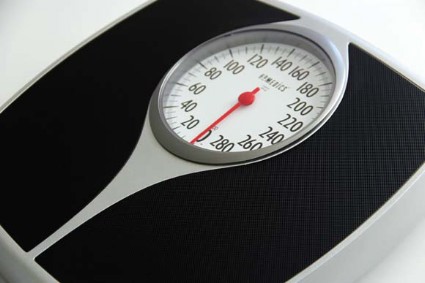User login
An increasing number of teens were hospitalized for restrictive eating despite not meeting the clinical definition for anorexia nervosa, according to a recent study.
Over 6 years, the proportion of patients admitted with a diagnosis of eating disorder not otherwise specified (EDNOS-Wt) increased from 8% (1 of 13) in 2005 to 47% (9 of 19) in 2009, compared with patients admitted with anorexia nervosa. Further, both groups showed similar clinical characteristics, Melissa Whitelaw of the Royal Children’s Hospital, Melbourne, and her colleagues reported (Pediatrics 2014;134:e758-64).
Among 174 patients admitted to the hospital’s specialist eating disorder program, 99 were included in the study. Patients were excluded for a bulimia diagnosis, a previous eating disorder hospitalization, age less than 12 years, no psychological symptoms, menstruation in the past 3 months, or for logistical reasons.
Although the anorexia patients had lower admission weights and body mass index (BMI) measurements, the amount and duration of weight loss before admission did not significantly differ between the two groups. Anorexia patients had lost a median 12.7 kg, compared with 13.2 kg among EDNOS-Wt patients. Acute medical complications also were similar between the groups, except lowest lying systolic blood pressure, which was lower in anorexia patients, the investigators said.
The lowest pulse rate was 45.1 beats per minute among anorexia patients and 47.1 bpm in EDNOS-Wt patients. Severe sinus bradycardia average pulse rates were 35 bpm in anorexia patients and 34 bpm in EDNOS-Wt patients. Incidence of low phosphate levels was similar in both groups. Enteral feeding was required for 30% of anorexia patients and 38% of EDNOS-Wt patients.
"Although not underweight, this [ENDOS-Wt] group was more medically compromised in some outcomes than the anorexia nervosa group," Ms. Whitelaw and her group noted. The team suggested that clinicians consulting with adolescents with significant weight loss, regardless of the teens’ actual weight, should "review the patient’s weight loss strategies to ensure they are sustainable and safe" as well as "carefully assess the patient’s cardiovascular health and consider the development of an eating disorder."
The study received no external funding, and the authors reported no disclosures.
An increasing number of teens were hospitalized for restrictive eating despite not meeting the clinical definition for anorexia nervosa, according to a recent study.
Over 6 years, the proportion of patients admitted with a diagnosis of eating disorder not otherwise specified (EDNOS-Wt) increased from 8% (1 of 13) in 2005 to 47% (9 of 19) in 2009, compared with patients admitted with anorexia nervosa. Further, both groups showed similar clinical characteristics, Melissa Whitelaw of the Royal Children’s Hospital, Melbourne, and her colleagues reported (Pediatrics 2014;134:e758-64).
Among 174 patients admitted to the hospital’s specialist eating disorder program, 99 were included in the study. Patients were excluded for a bulimia diagnosis, a previous eating disorder hospitalization, age less than 12 years, no psychological symptoms, menstruation in the past 3 months, or for logistical reasons.
Although the anorexia patients had lower admission weights and body mass index (BMI) measurements, the amount and duration of weight loss before admission did not significantly differ between the two groups. Anorexia patients had lost a median 12.7 kg, compared with 13.2 kg among EDNOS-Wt patients. Acute medical complications also were similar between the groups, except lowest lying systolic blood pressure, which was lower in anorexia patients, the investigators said.
The lowest pulse rate was 45.1 beats per minute among anorexia patients and 47.1 bpm in EDNOS-Wt patients. Severe sinus bradycardia average pulse rates were 35 bpm in anorexia patients and 34 bpm in EDNOS-Wt patients. Incidence of low phosphate levels was similar in both groups. Enteral feeding was required for 30% of anorexia patients and 38% of EDNOS-Wt patients.
"Although not underweight, this [ENDOS-Wt] group was more medically compromised in some outcomes than the anorexia nervosa group," Ms. Whitelaw and her group noted. The team suggested that clinicians consulting with adolescents with significant weight loss, regardless of the teens’ actual weight, should "review the patient’s weight loss strategies to ensure they are sustainable and safe" as well as "carefully assess the patient’s cardiovascular health and consider the development of an eating disorder."
The study received no external funding, and the authors reported no disclosures.
An increasing number of teens were hospitalized for restrictive eating despite not meeting the clinical definition for anorexia nervosa, according to a recent study.
Over 6 years, the proportion of patients admitted with a diagnosis of eating disorder not otherwise specified (EDNOS-Wt) increased from 8% (1 of 13) in 2005 to 47% (9 of 19) in 2009, compared with patients admitted with anorexia nervosa. Further, both groups showed similar clinical characteristics, Melissa Whitelaw of the Royal Children’s Hospital, Melbourne, and her colleagues reported (Pediatrics 2014;134:e758-64).
Among 174 patients admitted to the hospital’s specialist eating disorder program, 99 were included in the study. Patients were excluded for a bulimia diagnosis, a previous eating disorder hospitalization, age less than 12 years, no psychological symptoms, menstruation in the past 3 months, or for logistical reasons.
Although the anorexia patients had lower admission weights and body mass index (BMI) measurements, the amount and duration of weight loss before admission did not significantly differ between the two groups. Anorexia patients had lost a median 12.7 kg, compared with 13.2 kg among EDNOS-Wt patients. Acute medical complications also were similar between the groups, except lowest lying systolic blood pressure, which was lower in anorexia patients, the investigators said.
The lowest pulse rate was 45.1 beats per minute among anorexia patients and 47.1 bpm in EDNOS-Wt patients. Severe sinus bradycardia average pulse rates were 35 bpm in anorexia patients and 34 bpm in EDNOS-Wt patients. Incidence of low phosphate levels was similar in both groups. Enteral feeding was required for 30% of anorexia patients and 38% of EDNOS-Wt patients.
"Although not underweight, this [ENDOS-Wt] group was more medically compromised in some outcomes than the anorexia nervosa group," Ms. Whitelaw and her group noted. The team suggested that clinicians consulting with adolescents with significant weight loss, regardless of the teens’ actual weight, should "review the patient’s weight loss strategies to ensure they are sustainable and safe" as well as "carefully assess the patient’s cardiovascular health and consider the development of an eating disorder."
The study received no external funding, and the authors reported no disclosures.
FROM PEDIATRICS
Key clinical point: Teens presenting with severe weight loss may have acute medical complications and be at risk of developing an eating disorder, even though they are not underweight.
Major Finding: Among 73 patients with anorexia nervosa and 26 with eating disorder not otherwise specified (EDNOS-Wt), the proportion of EDNOS-Wt patients increased over 6 years from 8% to 47%, and EDNOS-Wt patients displayed similar clinical characteristics to anorexia patients.
Data Source: The findings are based on a 6-year retrospective cohort study of 99 patients aged 12-19 years who were admitted to a children’s hospital specialist eating disorder program in Melbourne.
Disclosures: The study received no external funding, and the authors reported no disclosures.

